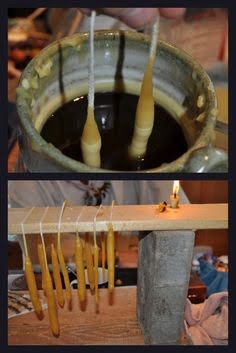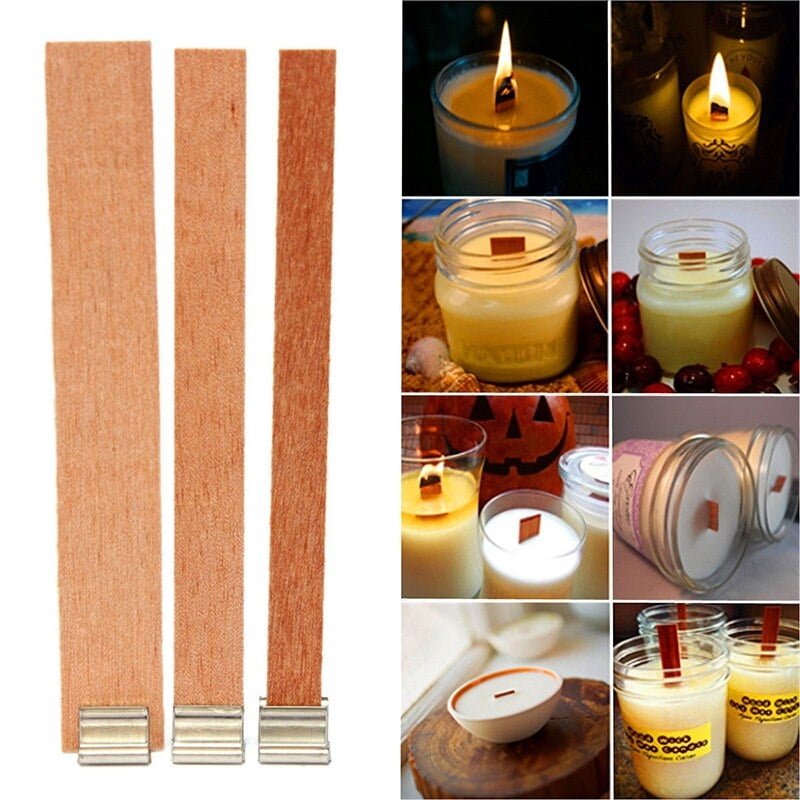Can you use soap dye in soy candle making? This question may arise for those who are looking to experiment with different color options for their soy candles. Before delving into this topic, it is essential to understand the fundamental differences between soap dye and candle dye.
While both types of dyes are designed to add color to different products, they are formulated with specific properties that cater to the unique characteristics of the products they are intended for. In this article, we will explore the properties of soap dye and how they differ from candle dye, as well as delve into whether soap dye can be effectively used in soy candle making.
When it comes to creating visually appealing candles, understanding the various properties of different dyes is crucial. The properties of soap dye and candle dye will determine their compatibility with soy wax and how they interact with the burning process. By understanding these differences, candle makers can make informed decisions when it comes to choosing the right type of dye for their soy candle projects.
We will also explore tips for using soap dye in soy candle making, including dos and don’ts that can help achieve the desired color effects without compromising the quality of the candles. Additionally, we will discuss alternative colorants for soy candle making, including natural options that offer a more sustainable approach to coloring soy candles. Through this exploration, readers can gain insights into making informed decisions for their candle making projects.
The Properties of Soap Dye and How They Differ From Candle Dye
Soap dye and candle dye are both used to add color to specific products, but they have some key differences in terms of their properties. Soap dyes are typically water-based and designed to work with the different chemical properties of soap. On the other hand, candle dyes are specifically formulated to work with the wax and higher melting points involved in candle making.
The properties of soap dye differ from those of candle dye in several ways:
- Solubility: Soap dyes are designed to dissolve easily in water, while candle dyes are formulated to be soluble in wax.
- Heat resistance: Candle dyes are made to withstand the higher temperatures needed for melting wax, while soap dyes may not hold up as well under these conditions.
- Color intensity: Candle dyes often produce more vibrant and truer colors when added to wax, whereas soap dyes may not achieve the same level of color intensity.
When considering whether or not to use soap dye in soy candle making, it’s important to take into account these differences in properties. While soap dyes may seem like a convenient option for coloring candles due to their availability and wide range of colors, they may not perform as well as traditional candle dyes when it comes to withstanding heat and producing vibrant hues.
Ultimately, understanding the properties of soap dye compared to candle dye can help crafters make informed decisions about which type of dye is best suited for their specific projects. By taking into account these differences, it becomes clear that using soap dye in soy candle making may not yield the desired results due to its inability to withstand the heat involved in the candle-making process.
Can Soap Dye Be Used in Soy Candle Making? Exploring the Compatibility and Potential Effects
Soap dyes and candle dyes are specifically formulated for use in different types of products. Soap dyes are designed to disperse in a water-based solution, while candle dyes are formulated to dissolve in wax. This fundamental difference is crucial when considering whether soap dye can be used in soy candle making.
The properties of soap dye differ significantly from those of candle dye. Soap dye is typically water-soluble, meaning it will not disperse properly in wax. Additionally, some soap dyes contain ingredients that may not be safe for burning, which can result in soot or other undesirable effects when used in candles.
Exploring the Compatibility and Potential Effects
Using soap dye in soy candle making can have several potential effects, including:
- Uneven coloring: Soap dye may not blend evenly with the wax, resulting in splotchy or streaky coloring
- Sooting: Some soap dyes contain additives that can cause excessive smoking or sooting when the candle is burned
- Fragrance interference: The ingredients in soap dye could potentially interfere with the scent throw of the candle
Additionally, using soap dye may void the safety certifications of your candles if you plan to sell them. It’s essential to consider these potential effects before deciding whether to use soap dye in soy candle making.
While it is possible to experiment with using soap dye in soy candle making, it’s important to proceed with caution and carefully observe the results. Remember that certain colors may behave differently than others when used with soy wax. Always conduct a small test batch before making a larger quantity of candles to ensure that the color performs as desired without compromising the quality of your finished product.
Tips for Using Soap Dye in Soy Candle Making
When it comes to creating homemade soy candles, using the right dye is crucial in achieving the perfect color. While candle dyes are specifically formulated for candle making and ensure consistent and vibrant colors, some crafters may wonder if they can use soap dye in their soy candle projects. It’s important to understand that there are differences between soap dye and candle dye that can affect the outcome of your candles.
Soap dyes are usually water-based or glycerin-based, which makes them suitable for coloring soap but not necessarily for candles. The properties of soap dye differ from those of candle dye, as candle dyes are designed to be highly concentrated and compatible with waxes, allowing them to disperse evenly without affecting the texture or performance of the candles.
Using soap dye in soy candle making can present several challenges. Since soy wax has a different chemical composition compared to soap, using soap dye may not blend well with the wax and could result in uneven coloring or poor adhesion. Additionally, certain ingredients in soap dyes might have adverse reactions when exposed to high temperatures during the candle-making process.
One way to experiment with using soap dye in soy candle making is by testing small batches before committing to larger projects. This allows you to observe how different colors behave with soy wax and assess whether any issues arise during the cooling and burning stages. Understanding the dos and don’ts of using soap dye in soy candles will help you make informed decisions when it comes to incorporating these colorants into your candle making projects.
| Usage | Soy Candle Making |
|---|---|
| Properties | Different from those of candle dye |
| Challenges | Poor blending with the wax and potential adverse reactions at high temperatures |
| Solutions | Testing small batches before committing to larger projects; understanding dos and don’ts |
Experimenting With Different Colors and Combinations Using Soap Dye in Soy Candle Making
When it comes to experimenting with different colors and combinations in soy candle making, using soap dye can open up a whole new world of possibilities. Soap dyes are available in a wide range of vibrant and unique colors, allowing candle makers to create custom shades and hues for their candles. By understanding the characteristics of soap dye and how they interact with soy wax, you can achieve stunning results in your candle making projects.
Understanding the Characteristics of Soap Dye
Soap dyes are typically water-based or glycerin-based, which sets them apart from traditional candle dyes that are designed specifically for use in wax. The properties of soap dye differ from those of candle dye, as they are formulated to disperse in water or glycerin rather than oil. When using soap dye in soy candle making, it’s important to consider how these differences may impact the final outcome of your candles.
Exploring Color Combinations
One of the advantages of using soap dye in soy candle making is the ability to experiment with color combinations. Soap dyes can be easily mixed to create custom shades, allowing you to achieve the exact color palette you desire for your candles. By blending different soap dyes together, you can create unique and eye-catching colors that will make your candles stand out.
Achieving Different Effects
In addition to creating custom colors, soap dyes
The Potential Drawbacks of Using Soap Dye in Soy Candle Making
When considering the use of soap dye in soy candle making, it is important to understand the potential drawbacks associated with this choice. While soap dye might seem like a convenient option due to its vibrant colors and availability, there are several factors that can make it less ideal for candle making.
Chemical Composition
One of the primary drawbacks of using soap dye in soy candle making is the difference in chemical composition between the two products. Soap dye is formulated specifically for use in soap, which means it may contain ingredients that are not suitable for burning. When the candle is lit, these ingredients can release harmful fumes or affect the overall quality and burn of the candle.
Fading and Bleeding
Another potential issue with using soap dye in soy candles is that it may lead to fading or bleeding of colors. Since soy wax has different properties than soap, it may not hold onto or disperse the color in the same way. This can result in uneven coloring, fading over time, or bleeding into other layers of wax if creating multi-colored candles.
Scent Interference
Soap dyes often come with their own fragrances or scents, which can interfere with any fragrance oils used in the candle making process. This interference can result in an unpleasant combination of scents or a weaker throw of fragrance when the candle is burned.
Consideration of these drawbacks is crucial when deciding whether to use soap dye in soy candle making. While it may be tempting to use readily available materials, taking into account these potential issues can help ensure a successful and high-quality final product for your candle making projects.
Alternative Colorants for Soy Candle Making
The use of natural colorants in soy candle making has become increasingly popular as more people seek eco-friendly and non-toxic options for their home decor and ambiance needs. Many candle makers are looking to move away from synthetic dyes in favor of more natural and sustainable alternatives. In this section, we will explore the various natural options available for coloring soy candles, and how they compare to using soap dye.
One of the most popular natural colorants for soy candle making is mica powder. Mica is a mineral that comes in a range of vibrant colors, making it an excellent choice for those looking to create eye-catching and unique candles. It is also relatively easy to work with, as it mixes well with the soy wax and does not typically affect the scent throw or burn quality of the candle.
Another natural option for coloring soy candles is powdered herbs and spices. Botanicals such as turmeric, beetroot powder, and spirulina can be used to add subtle tones to soy wax, creating earthy and muted hues. However, it is important to note that some powdered herbs may not fully dissolve in the wax, which can result in speckled or uneven coloring.
Finally, vegetable-based colorants derived from plants like carrots, spinach, and red cabbage offer a more sustainable alternative to synthetic dyes. These natural colorants can be used to achieve pastel shades in soy candles and are particularly well-suited for those who prioritize environmental responsibility in their candle making practices.
| Natural Colorant | Properties |
|---|---|
| Mica Powder | Vibrant colors; mixes well with soy wax; minimal impact on scent throw |
| Powdered Herbs/Spices | Subtle tones; potential for uneven coloring; muted hues |
| Vegetable-based colorants | Sustainable alternative; pastel shades; environmentally responsible |
As we consider these natural options for coloring soy candles, it’s important to weigh the pros and cons of each method in order to make an informed decision about which approach best suits your preferences and values as a candle maker.
Conclusion
In conclusion, the decision to use soap dye in soy candle making ultimately depends on the level of risk one is willing to take and the desired outcome for their candle projects. While soap dye may offer a wide range of vibrant colors and shades, its compatibility with soy wax and long-term effects on the quality of the candles remain uncertain.
As we have explored, using soap dye in soy candle making can potentially lead to issues such as poor scent throw, uneven coloring, and even wick clogging.
When considering the use of soap dye in soy candle making, it is crucial to weigh the pros and cons carefully. While soap dyes may offer a wider range of color options compared to traditional candle dyes, they also present potential drawbacks that could affect the overall quality of the candles. Additionally, it’s essential to consider alternative colorants for soy candle making, such as natural options like mica powder or liquid dyes specifically formulated for candles.
Ultimately, making an informed decision about whether to use soap dye in soy candle making requires careful consideration of the potential risks and benefits. By experimenting with different colorants and closely monitoring their effects on the quality of the candles, one can make a well-informed decision that aligns with their preferences and goals for their candle making projects.
Frequently Asked Questions
What Can You Use to Color Soy Candles?
There are various options for coloring soy candles, including liquid dye, dye chips, and natural colorants such as mica powders or herbs. It’s important to choose colorants that are specifically made for candle making and are compatible with soy wax.
Can You Use Liquid Dye in Soy Wax?
Yes, liquid dye can be used in soy wax to color candles. However, it’s essential to use dyes that are specially formulated for candle making to ensure they mix well with the wax and don’t affect the candle’s burn quality.
Is Soap Colorant Flammable?
Generally, soap colorants are non-flammable and safe to use in candles. However, it’s crucial to always check the product label and follow the manufacturer’s guidelines when using any type of colorant in candle making. Some additives may have specific instructions or limitations due to their chemical composition.

Welcome to my candle making blog! In this blog, I will be sharing my tips and tricks for making candles. I will also be sharing some of my favorite recipes.





